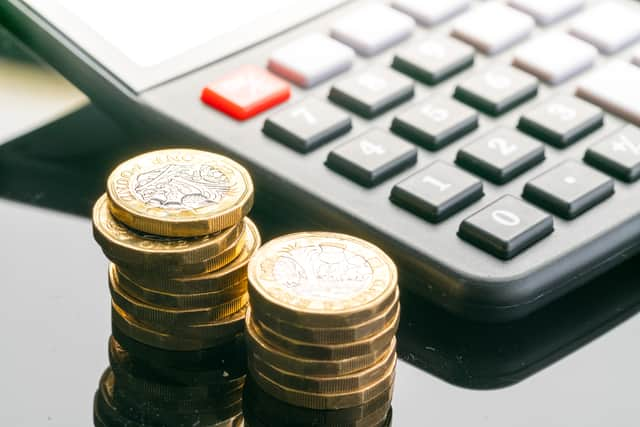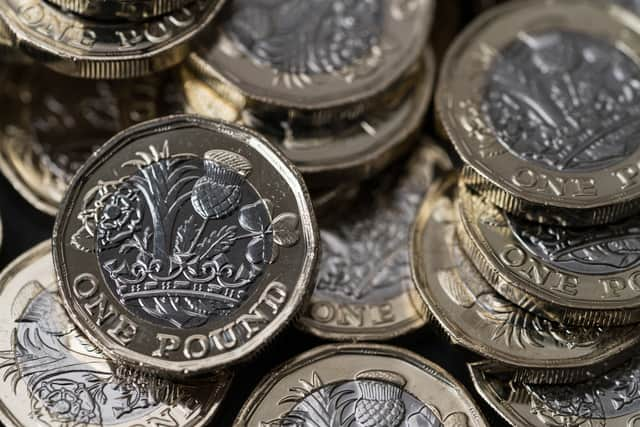What is an ISA account? Tax-free bank savings accounts and annual ISA allowance explained
and live on Freeview channel 276
The new tax year kicks in from this Thursday (6 April), with the annual event forming the perfect opportunity to consider how your money works for you.
While April has arrived with yet another squeeze on household budgets, thanks to several major bill hikes and an effective increase to income tax, it is also coming at a time when 14-year-high interest rates are offering a good opportunity to save your hard-earned cash. Although, it should be noted, near-record inflation means we are all seeing an erosion of the value our money holds, and the interest on savings cannot make up for it.
Every new tax year refreshes the Individual Savings Account (ISA) allowance (i.e. the amount of money you can put into this type of account). The interest you earn from this type of account is entirely tax-free, including from capital gains tax, making them a great option for higher earners or anyone with a large savings pot.
But some types of ISA can also be useful for first-time buyers or young people looking to put together money for their retirement. With recent news that people currently in their 20s may have to wait until they are 74-years-old before becoming eligible for the state pension, it means these accounts could help you retire early.
So, what exactly is an ISA - and how does this kind of account work? Here’s everything you need to know.
What is an ISA?
An ISA is a form of bank account that allows you to receive tax-free interest on the money you put away. For the 2023/24 tax year, the maximum amount of money you can save in this kind of account will remain at £20,000 - a limit that has been in place since 2017.
With regular savings accounts, while you may be offered a higher interest rate and get greater flexibility on how easy it is to access your cash, you’re taxed for any interest you receive above a certain limit (known as a personal savings allowance). This is set at £1,000 for basic rate income taxpayers (those earning between £12,571 to £50,270 a year), and £500 for higher rate earners (those on between £50,271 and £125,140). Those with top rate salaries (currently over £150,000 but will change to over £125,140 from April) receive no tax-free allowance.


It means the effectiveness of ISAs is limited for most people (it is difficult to make £1,000 in interest without having a substantial savings pot). But they remain especially useful for people who have large cashpots, who are paying the additional rate of tax, or who want to make long-term savings without exposing them to the taxman.
How do ISAs work?
At their most basic level, ISAs are a safe place to save your money and earn interest on top of it. But there are several different types of ISA:
Cash ISA
The most basic form of ISA works in almost exactly the same way as a conventional savings account. The only major differences are the tax saving on interest, and the maximum amount you can deposit in the account in a tax year (£20,000 versus a much higher figure in regular savings accounts).
There are three main categories of cash ISA: instant-access, regular savings and fixed-rate ISAs. Instant access ones allow you to pay in and withdraw money at pretty much any time, but offer a variable rate.
Regular savings cash ISAs offer a fixed rate of interest that is paid out over a certain period of time, so long as you put a certain amount of money into it each month.
Finally, fixed-rate ISAs tend to see you commit to locking away your money for a certain amount of time. Once you have passed the deadline, you can receive the interest accrued on the account. The longer the term, the greater the interest payout.
Stocks and shares ISA
This form of ISA is an investment account. Its main benefit is that it shields the interest you make from capital gains tax. However, it also carries an element of risk as your investment could go down as well as up.
You can either opt for a managed account (where you pay a fee for the bank or financial institution you hold the ISA with to arrange your investments), or you choose where your money goes yourself (which can still incur a fee).


As with cash ISAs, the limit you can put into a stocks and shares ISA is £20,000 per tax year (for the 2022/23 tax year at least).
Innovative finance ISA (IFISA)
IFISAs are essentially peer-to-peer loans for borrowers who do not want or cannot get a traditional bank loan. You will be paired with a borrower, who will offer you a rate of interest on top of the investment you’ve given them.
This interest is tax-free and you can put in up to £20,000. However, as with stocks and shares ISAs, there is an element of risk as your return may not match your investment.
Lifetime ISA
Lifetime ISAs (LISAs) are government-backed savings schemes that are intended to help young people save up to get on the housing ladder, or save money for their retirement.
They either come in the form of cash ISAs or stocks and shares ISAs. You can put in up to £4,000 a year (which will come out of your £20,000 allowance for other ISA products) and the government will pay 25% bonus into the account depending on what you save per year.


It can only be opened by people aged 18 to 39. If you’re using it for property, you have to be a first-time buyer. And, if you’re using the funds for retirement, you can only pay into the account until the age of 50. You have to then wait until the age of 60 to withdraw it.
Help to buy ISA
This type of ISA is now no longer available, having closed to new savers in late-2019. But many first-time buyers will still hold these accounts.
Designed to enable people to get into the housing market, this form of savings account allowed you to deposit up to £1,200 initially, and then pay in up to £200 a month thereafter. The government pays a 25% bonus on what you save up to a maximum of £3,000 a year.
But whatever you pay in per year comes out of your £20,000 allowance for the tax year.


How many ISAs can I have in a tax year?
Technically, you can put your money into one of each kind of ISA every tax year (i.e. between 6 April and 5 April every year). However, the overall limit is £20,000 per year. Put another way, you can spread up to £20,000 across all of your ISAs in the 12 months between April 2023 and April 2024.
At the moment (if you have the cash) with the new tax year still a day away, there is an opportunity to put £20,000 away and then put another sum into the account after 6 April. Or, if you’re saving into a LISA, you can put £4,000 in and then add another £4,000 soon afterwards.
What are the best ISA rates?
Given interest rates have been climbing over the past year, the amount you can earn back in interest from an ISA has risen - although the rates are still well behind those you will find attached to other types of savings account.
According to Money Saving Expert (MSE), the best rates currently on the market range from 3.25% for easy access ISAs to 4.15% for a one-year fix. The best five-year fixes currently sit on or around the 4% mark, MSE says.
Given the other forms of ISA very much depend on how stocks perform, the rates could be more or less lucrative. If you’re in any doubt, be sure to speak to a financial advisor.
Comment Guidelines
National World encourages reader discussion on our stories. User feedback, insights and back-and-forth exchanges add a rich layer of context to reporting. Please review our Community Guidelines before commenting.
